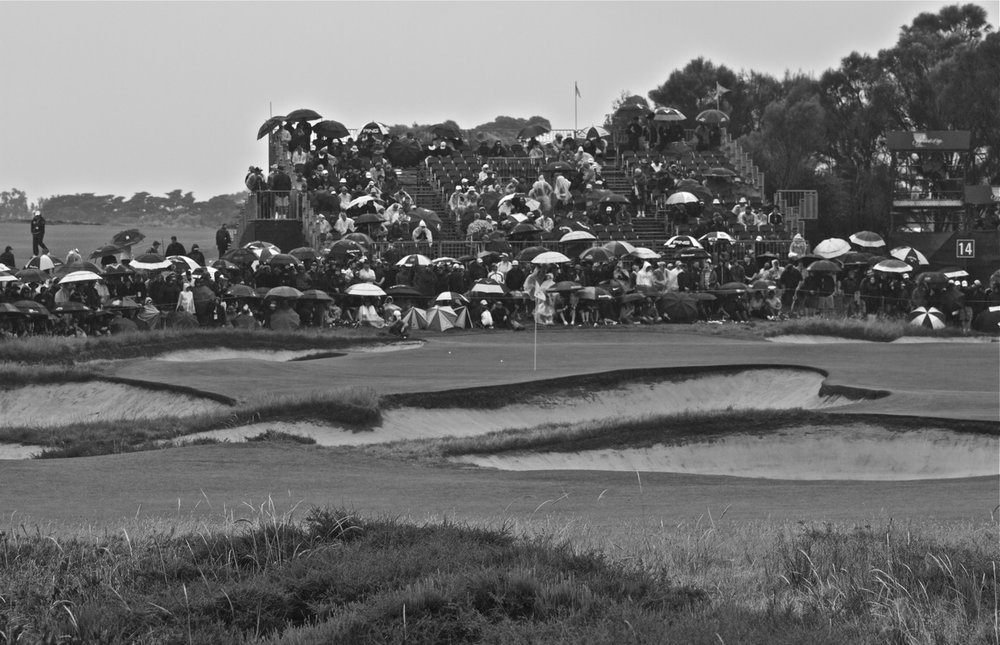Australia Round-up: Mornington Peninsula Courses
/ Thanks to Darius Oliver for arranging a whirlwind two-day tour of the Mornington Peninsula region south of Melbourne, home to some of the sweetest golf terrain imaginable along with some world class designs and the exquisite vanilla slice in the lovely resort town of Sorrento.
Thanks to Darius Oliver for arranging a whirlwind two-day tour of the Mornington Peninsula region south of Melbourne, home to some of the sweetest golf terrain imaginable along with some world class designs and the exquisite vanilla slice in the lovely resort town of Sorrento.
There really is no terrain quite like it, so picture the Hampton's melded with a seemingly endless view of linksland, ancient trees, shrub-covered hills and you have some idea what the second home area for Melbourne's elite looks like.
The standout courses are featured, with images below or on the Photos page (the course website links below have much better shots than my quick snaps captured in between shots).
This Greg Norman Bob Harrison design is held back only by a routing that finishes with a long, uphill stretch, and I'm told that this is more a product of the land planning done by another architect who divided up the plots at this 54-hole complex. Otherwise Harrison's mix of holes, green complexes and opportunities to hit some wildly fun run-up shots makes this the stand out design on the peninsula. The club has two other courses and from the glimpses I saw, they are no match for the world-class golf found on the Moonah. Norman gets the credit, but the vision behind the architecture, beautiful bunkering and overall fun is Harrison.
Stand out hole: short par-4 11th with a beautiful exposed sand area off the tee with a semi-blind second to a punchbowl green. Pictured in the slideshow below, which also shows the fantastic bunkers on this beautifully maintained example of firm, fast golf.
St. Andrews Beach
In immaculate condition, this Tom Doak-designed public course with input from Mike Clayton would be a standout gem in any other reason, but because of its checkered financial history, eccentric design touches and the more straightforward golf in the region gives the impression that this one is (unfortunately) is all too forgotten about. As with some of Doak's early work, a few greens struck me as too small for the contours and slope, but that shouldn't overshadow the many fascinating holes found here. Also note the small, temporary clubhouse. It's probably all most courses need: a pro shop, bathrooms and a nice place for a post-round beer.
Standout hole: the par-3 16th, played from the forward tees. A stunning Redan-like downhill three also features a "Doak" tee 235 yards away, which negates the fun of playing the run-up approach shot. (pictured in gallery)
Portsea Golf Club
This is the real heartbreaker of the region. The scale and beauty of the property is ideal for golf--think Royal Dornoch meets a heathland course). Unfortunately, the club has sold key plots of land to raise money, causing changes to the 9th hole and now the beautiful first. This should be a course on the top of all Peninsula lists but because of its lack of distance in the modern era and the recent changes to the property lines, will likely lose relevance with many. But even with the changes, Portsea still features plenty of super holes and should be celebrated for its smaller, more intimate scale as compared to the courses at The National. It's a must play and the kind of place you'd like to play everyday thanks to the variety, terrain and beauty.
Standout hole: short par-4 13th set atop a knob with a wide area to play to but trouble on all sides, with an exposed green making second shots tricky.
Peninsula Country Club - North Course
Technicaly closer to the sandbelt courses than the peninsula, this 36-hole facility features the longer South and more intimate North, which plays over ideal territory and featured what you'd expect to find in a region influenced by MacKenzie: interesting greens rewarding well thought out angles of attack and cleverness around the greens. It wasn't always that way, as Peter Thomson's work has been modified by Mike Clayton to better reflect the sandbelt values. A few more trees could be removed and the rough (so gladly seen after years of drought) trimmed, but all in all this is an ideal members course in that it will test an elite player while proving playable for the average member.
Standout holes: the par-3 second and par-3 14th are both stunning to look at and fun to hit shots too, while the par-4 18th makes for a solid finish.

















